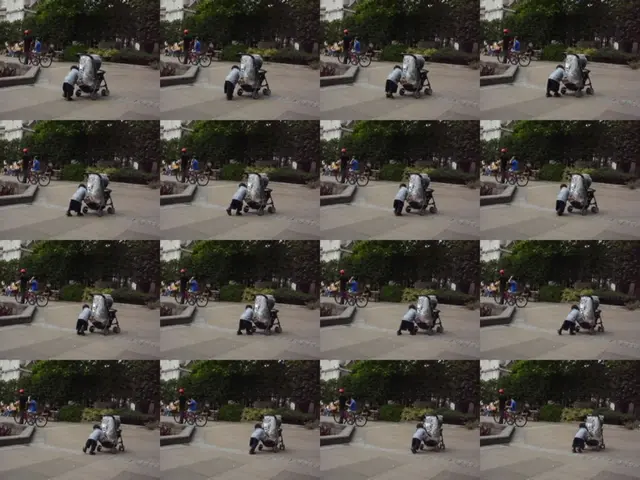No-Nonsense Guide to Singapore Math: A Fresh Approach to Learning Mathematics
Advantages, Disadvantages, and Functionality of Singapore Math for Children: An Analysis
Singapore math might sound like some alien math program, but it's just another way of crunching numbers, straight from the Little Red Dot across the globe. The system was dreamt up in the 1980s by the Ministry of Education in Singapore and has since made waves around the world, including the shores of the United States. This guide is your straightforward, unfiltered look at what Singapore math is and how it can revolutionize your kid's math skills.
What is Singapore Math?
Singapore math gained global fame when it was adopted by US public schools in the late 90s. It originated in Singapore in 1982 as a response to the struggling mathematics performance among students. So, instead of making learning math a chore, the Singaporeans approached it with a 3-step model designed for understanding: concrete, pictorial, and abstract. It might seem a bit complex, but trust us, it's one of the most effective math teaching methods out there.
Mastering Mathematics with the CPA Approach
The Singapore Math approach revolves around the CPA (Concrete, Pictorial, Abstract) model. Here's a quick breakdown of how it works:
- Concrete phase: Students learn through hands-on, real-life objects. No more counting apples with imaginary numbers. With this approach, kids can physically interact with objects, helping them grasp mathematical concepts better.
- Pictorial phase: Kids start to visualize problems using drawings and pictures, mentally applying the concepts they learned in the concrete phase. This phase aids in better understanding of complex math problems.
- Abstract phase: Now things start to get a bit tough, but don't sweat. The abstract phase uses mathematical symbols like +, -, ×, and ÷ to solve problems. No more counting apples on a separate chalkboard – now, students are armed with the knowledge and skills to tackle math problems like a pro.
Textbooks that Make Learning a Joy
Gone are the days of boring, dry math textbooks. Singapore Math places a strong emphasis on spicing up the learning process with concise lessons featuring engaging visuals to capture students' interests. The best part? No more mindlessly memorizing equations. Instead, students understand the core concepts and apply them to real-world problems.
Building Confidence through Understanding
With Singapore Math, rote memorization takes a backseat to understanding. By fostering a deep understanding of math concepts, students build confidence in their abilities and are better prepared to tackle complex math problems as they progress through school. And who doesn't want a confident, math whiz kid?
Deep Dive into Math with Singapore Math
Fewer topics might be covered, but with Singapore Math, each subject area is explored in-depth. Lessons aren't typically revisited, opting instead for a progressive, sequential approach that builds on prior lessons to reinforce concepts. This targeted focus helps students develop a strong foundation in math, setting them up for success in more complex math subjects.
Singapore Math: Winning Hearts Across the US
Schools across the US have jumped on the Singapore math bandwagon, incorporating its methods into their curriculum for both public and private school programs. California takes the cake, with day schools integrating Singapore Math into their curriculum from the kindergarten level. Other states like Burlington and New Charter are also striving to improve their existing curriculum.
Why is Singapore Math All the Rage?
Easy on the Eyes and Mind
The distinctive Singapore Math approach caters to both visual and practical learners. Every concept is explored from various angles and with multiple variations, aiding students in better grasping and understanding the underlying mathematical principles. This innovative approach sets Singapore Math apart from traditional textbook math programs, which tend to lack visual appeal and cater primarily to more abstract thinkers.
Mastering the Art of Thinking Abstractly
Singapore Math presents problems from different perspectives, encouraging students to think abstractly. This skill is invaluable, and its acquisition is crucial for success in future STEM endeavors. Compared to traditional methods, Taiwan Math examples and solutions boast a variety of unique insights that can help students gain a deeper understanding of abstract concepts.
Pushing Beyond the Confines of School Curriculum
Transitions from traditional U.S. math textbooks to Singapore Math can offer an extra dose of challenge. Forget being limited to what's in the school textbook – Singapore Math methods invite students to venture beyond the classroom and find their own solutions through creative problem-solving.
Pros of Singapore Math
- Singapore Math fosters a deeper understanding of mathematical concepts, preparing students for future academic success in STEM fields.
- The shorter, yet engaging lessons make learning math enjoyable and less daunting.
- With a world-renowned education system, Singapore Math sets students up for success, placing them among the top performers in international math studies.
Cons of Singapore Math
- Implementing Singapore Math requires patience and time, as the learning curve can be steep. Homeschooled students might need to invest extra hours mastering the techniques, and it may not be financially feasible for all school districts to adopt the curriculum.
- Singapore Math is designed to work in harmony with the Common Core State Standards Framework, which may pose challenges when switching from traditional teaching methods.
- Implementing the Singapore Math curriculum can be costly due to the need for specialized materials and teacher training.
- The curriculum doesn't revisit previous lessons once it moves past the initial chapters, making the learning curve steeper for students switching schools or learning environments.
- The Singapore Math curriculum places a strong emphasis on conceptual learning and understanding, focusing less on traditional data analysis methods. This might be a significant shift for students use to relying on data to solve problems.
- Embracing Singapore Math's CPA approach in parenting and education-and-self-development can foster personal-growth by promoting understanding over rote memorization, resulting in a greater appreciation for mathematics.
- The depth of exploration in Singapore Math contextualizes learning and encourages personal-growth, making it a valuable tool for self-development in areas outside of mathematics, such as problem-solving and abstract thinking.








